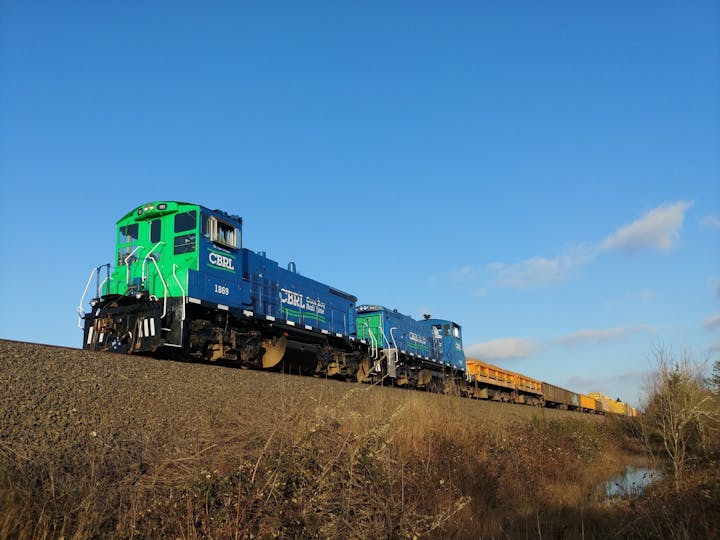Economic Impact
Overall Economic Impact
Operations and maintenance of the Coos Bay Rail Line (CBRL) provide a number of benefits to the region, including:
- Transportation options for local industries
- Jobs and income associated with construction projects
- Jobs and income associated with operations
- Reduced emissions, road damage and vehicle accidents
On average, the Coos Bay Rail Line moves about 5,000 rail car loads every year.
For a full economic impact study, click here.
Operations
The Coos Bay Rail Line is owned and operated by the Port of Coos Bay. The CBRL operates at the U.S. shortline railroad industry standard of 286,000 lbs/143 short tons (weight of car plus commodity weight) per loaded revenue car. The majority of cars currently moving on the rail line weigh 66,000 to 86,000 lbs/33 to 43 short tons, resulting in a carrying capacity of 200,000 to 220,000 lbs/100 to 110 short tons.
Using 200,000 lbs/100 short tons as an average weight of commodity per rail car, the tonnage figures for the years 2011 through 2022 are as follows:
- 2011 - 194 revenue car loads = 19,400 short tons
- 2012 - 2,480 revenue car loads = 248,000 short tons
- 2013 - 4,850 revenue car loads = 485,000 short tons
- 2014 - 7,509 revenue car loads = 750,900 short tons
- 2015 - 7,341 revenue car loads = 734,100 short tons
- 2016 - 7,434 revenue car loads = 743,400 short tons
- 2017 - 7,172 revenue car loads = 717,200 short tons
- 2018 - 6,428 revenue car loads = 642,800 short tons
- 2019 - 4,950 revenue car loads = 495,000 short tons
- 2020 - 5,128 revenue car loads = 512,800 short tons
- 2021 - 6,213 revenue car loads = 621,300 short tons
- 2022 - 6,755 revenue car loads = 675,500 short tons


